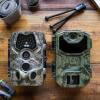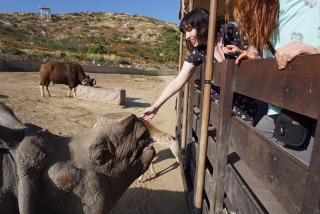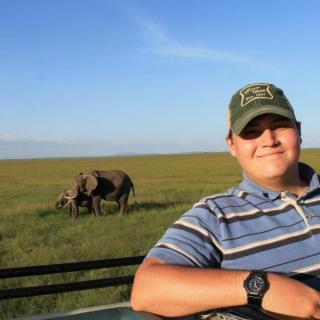Camera traps have been a key part of the conservation toolkit for decades. Remotely triggered video or still cameras allow researchers and managers to monitor cryptic species, survey populations, and support enforcement responses by documenting illegal activities. Increasingly, machine learning is being implemented to automate the processing of data generated by camera traps.
A recent study published showed that, despite being well-established and widely used tools in conservation, progress in the development of camera traps has plateaued since the emergence of the modern model in the mid-2000s, leaving users struggling with many of the same issues they faced a decade ago. That manufacturer ratings have not improved over time, despite technological advancements, demonstrates the need for a new generation of innovative conservation camera traps. Join this group and explore existing efforts, established needs, and what next-generation camera traps might look like - including the integration of AI for data processing through initiatives like Wildlife Insights and Wild Me.
Group Highlights:
Our past Tech Tutors seasons featured multiple episodes for experienced and new camera trappers. How Do I Repair My Camera Traps? featured WILDLABS members Laure Joanny, Alistair Stewart, and Rob Appleby and featured many troubleshooting and DIY resources for common issues.
For camera trap users looking to incorporate machine learning into the data analysis process, Sara Beery's How do I get started using machine learning for my camera traps? is an incredible resource discussing the user-friendly tool MegaDetector.
And for those who are new to camera trapping, Marcella Kelly's How do I choose the right camera trap(s) based on interests, goals, and species? will help you make important decisions based on factors like species, environment, power, durability, and more.
Finally, for an in-depth conversation on camera trap hardware and software, check out the Camera Traps Virtual Meetup featuring Sara Beery, Roland Kays, and Sam Seccombe.
And while you're here, be sure to stop by the camera trap community's collaborative troubleshooting data bank, where we're compiling common problems with the goal of creating a consistent place to exchange tips and tricks!
Header photo: Stephanie O'Donnell



- 1 Resources
- 29 Discussions
- 18 Groups
- @tsmstrat
- | she/her
- 1 Resources
- 2 Discussions
- 4 Groups
- 0 Resources
- 0 Discussions
- 13 Groups
Spanish veterinarian interested in wildlife conservation
- 0 Resources
- 0 Discussions
- 14 Groups
- @CaseyAliveAI
- | He/Him
I'm an AI developer focused on ecology and the director of Alive AI
- 0 Resources
- 0 Discussions
- 4 Groups
- @team
- | team
Make the stories that make this life worth living.

- 0 Resources
- 2 Discussions
- 6 Groups
Software engineer
- 0 Resources
- 3 Discussions
- 4 Groups
- @Mumonkan
- | he / him
Conservation X Labs & Wild Me
Software Engineer for Wildlife Conservation

- 0 Resources
- 4 Discussions
- 11 Groups
- @aranFish
- | He/Him
CTO at SafetyNet Technologies


- 1 Resources
- 1 Discussions
- 6 Groups
- @ajcatella
- | he/him
I work as a BI Consultant, specialising in Power BI and am passionate about wildlife, particularly in Africa
- 0 Resources
- 3 Discussions
- 8 Groups
- @asime
- | He
I am Asime Oba a passionate conservationist with a strong background in microbiology and environmental science and a deep commitment to preserving, protecting and conserving wildlife and wild places in the Niger Delta region of Nigeria.
- 0 Resources
- 0 Discussions
- 4 Groups
- @SZaluski
- | her, she
- 0 Resources
- 0 Discussions
- 3 Groups
Do you or someone you love study nocturnal animals? Do you want to film behavior in infrared, but NOT spend $1k on a camera (that will die in the field anyways)? Is short battery life a constant battle? Here, this...
20 October 2023
When considering MPA groundfish monitoring methods: the more, the merrier! New paper out in Journal of Applied Ecology compared three MPA monitoring techniques commonly utilised to survey groundfish populations. They...
20 October 2023
Have you ever wanted to continuously film underwater species and their behaviours for up to 2 days at a low cost? Well now you can with this new open-source design guide published in @MethodsEcolEvol! https://...
5 September 2023
An interesting new paper from a camera trap surveying species' responses and resilience to megafires in the western United States. A great example of how conservation tech can help us understand regional climate change...
24 August 2023
WCS is seeking a Conservation Technology Specialist to join their work in the Okapi Wildlife Reserve.
11 August 2023
Please join us in celebrating this year’s top #Tech4Wildlife Photo Challenge Honorees as chosen by our panel of leading conservation organization judges, and enjoy the story contained within these entries about how our...
4 August 2023
Join us as we count down the WILDLABS community's honorees in the first-ever #Tech4Wildlife Community Choice Awards!
3 August 2023
Exciting opportunity for an experienced biodiversity monitoring expert in ZSL's conservation department
18 July 2023
Article
In 2019, the U.S. Navy initiated a time-lapse camera study to investigate seal presence at select haul-out locations in the lower Chesapeake Bay and coastal waters of Virginia, which are important areas to Navy training...
13 July 2023
Apply for funding (£500,000-£750,000) to develop software systems, which will help to improve biodiversity monitoring by automating the analysis of images and videos
12 July 2023
Applications are now open till 23 July for the 2023 Canon Oceania Grants with the category of the Environmental Grant valued at AU$5,000. The finalist will be selected based on the environmental and social merits of...
7 July 2023
Article
At Appsilon, we are always working to enable our users to get the most out of our solutions. With this in mind, we are happy to introduce two new add-ons to Mbaza AI.
4 July 2023
June 2025
July 2025
June 2020
October 2019
event
58 Products
Recently updated products
4 Products
Recently updated products
| Description | Activity | Replies | Groups | Updated |
|---|---|---|---|---|
| Hi Egil, When you mention 'location' you refer to the location of the images from where they are imported from? And not the gps location from the EXIF data if it's... |
+9
|
Camera Traps | 7 years 5 months ago | |
| . |
|
Camera Traps | 7 years 7 months ago | |
| If you're planning a camera trap survey, then look no further. We've read through most (all?!) of the camera trap literature, so... |
|
Camera Traps | 7 years 7 months ago | |
| Hi John, They will want a camera with good tolerance to humidity + precipitation (so a camera with a proper O-ring seal, and pack it with regularly-dried silica gel).... |
|
Camera Traps | 7 years 7 months ago | |
| Hi all, If you haven't please take this survey on camera traps led by @P.Glover.Kapfer . I'm posting it here to... |
|
Camera Traps | 7 years 8 months ago | |
| @@Chloe+Aust - pls google “ltl acorn uk”, you will get a lot info. No, no limited, just the company's sale rules. You could use it anywhere, but... |
|
Camera Traps | 7 years 10 months ago | |
| Fair point, it isn't a peer reviewed article as yet. I had a poke around out of curiosity and wasn't able to track down a fully published paper yet (thought it's been... |
|
Camera Traps | 7 years 11 months ago | |
| black thinking hat ! Interesting and honest. |
|
Camera Traps | 8 years ago | |
| Steph, Not quite. I'm coordinating a fauna monitoring project for a Landcare network and, of course, we hope to get phascogales. I've just retrieved a batch of cameras... |
|
Camera Traps | 8 years 1 month ago | |
| A number of good points have been made. In terms of remote-enable camera traps, you will mainly find one that use cellular data signals to transmit images. Typically these are... |
|
Camera Traps | 8 years 2 months ago | |
| Thanks, i send the it to my chinese friends, i am sure some of them finished the survey. cheers Kai |
|
Camera Traps | 8 years 2 months ago | |
| The facts are simple. If you violate the assumption of independence of sampling events you will bias the result. In the event of multiple observations by overestimating occupancy... |
+1
|
Camera Traps | 8 years 3 months ago |





































